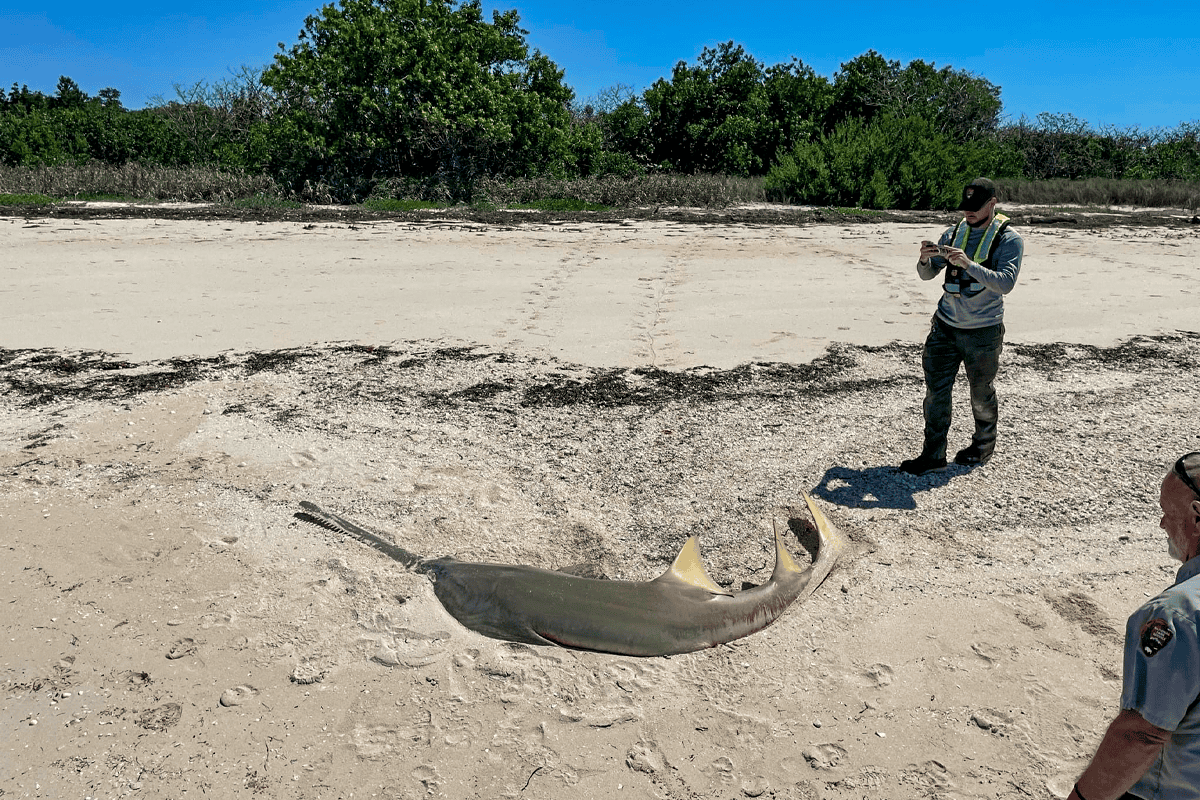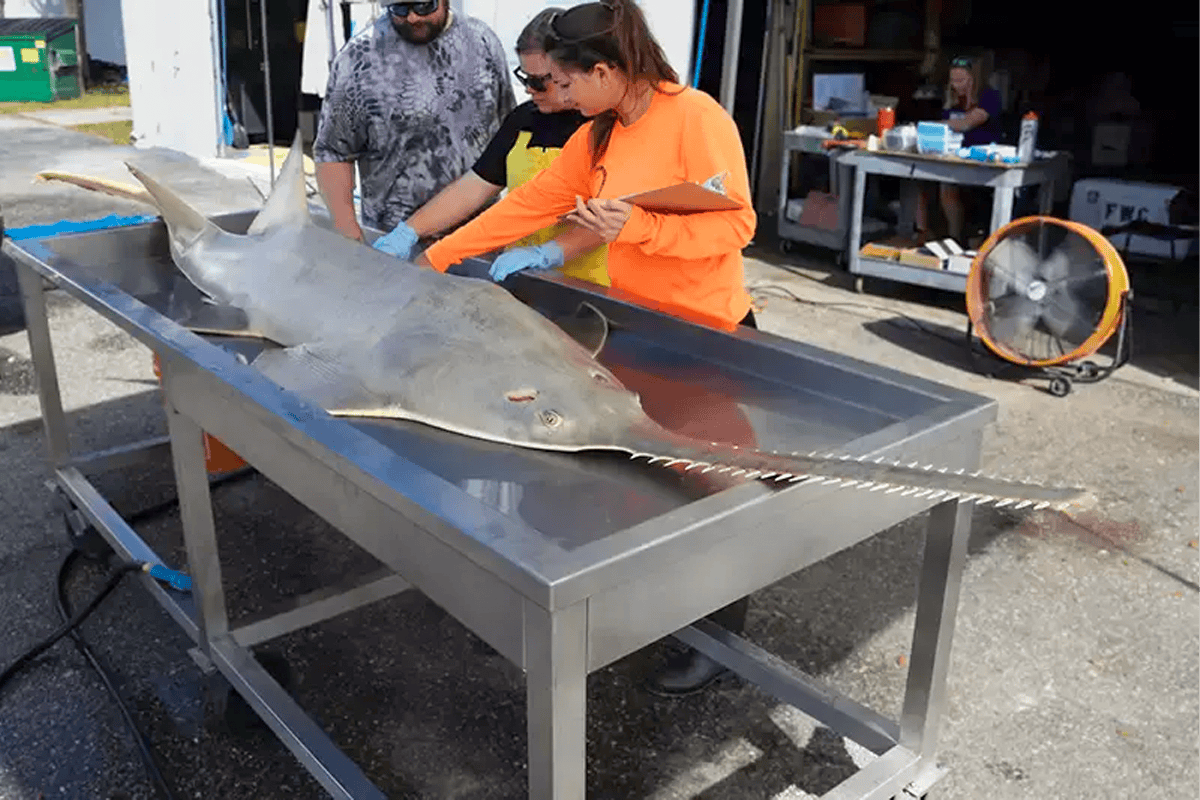Smalltooth sawfish mysteriously dying in Florida waters, four in Everglades National Park

CAPE SABLE, Fla. – In a mystery fit for the supernatural, the Florida Fish and Wildlife Conservation Commission has reported 40 smalltooth sawfish have died in state waters since the start of the year, including four in Everglades National Park since January.
“Some sawfish have exhibited whirling behavior before dying. At this time, the cause of this abnormal behavior and these mortalities is not known,” the Florida Fish and Wild Conservation Commission said.
Recently, park rangers with Everglades National Park discovered a dead 12-13 foot long smalltooth sawfish washed up on the beach in Cape Sable. It was the fourth confirmed death of a smalltooth sawfish found at the park since January.
According to The Florida Fish and Wildlife Conservation Commission, or FWC, reports of smalltooth sawfish deaths were first reported in January 2024. The conservation also has documented spinning fish and small-scale fish mortalities from the Florida Keys in 2023.
In April, a smalltooth sawfish was discovered in Cudjoe Key after reportedly swimming in circles in Cudjoe Bay. The fish was tested for samples, measuring, and tagging before being loaded onto a vessel and provided respiratory assistance.
A distressed smalltooth sawfish was reported even as far north as Boynton Inlet in Palm Beach County.
As of Wednesday, the FWC has sent 12 smalltooth sawfish blood and tissue samples to the University of South Alabama for toxin analyses. The commission also has sent 52 fish to the university for testing.
While both might be connected, the FWC has yet to draw any conclusion to the mystery. Through their testing, the commission has not found “signs of communicable pathogen” and dead fish were negative for bacterial infections.
Additional testing has determined the strange fish behavior and deaths are not caused by dissolved oxygen, salinity, pH, or temperature. The Department of Environmental Protection also has not found a substantial amount of chemicals from its water testing.

Overall, the FWC has logged 441 fish kill reports, gathered 226 fish samples, and collected 165 water samples as of Wednesday.
According to the National Oceanic and Atmospheric Association, or NOAA, the smalltooth sawfish is one of five types of sawfishes. The fish gets its name from its distinct nose-like characteristic; a long, flat snout edge with teeth that appear like a saw.
Specifically, the smalltooth sawfish belong to a group of species called elasmobranchs, which include rays, skates, and sharks. The fish has no bones and their skeletons are made of cartilage, which is firm tissue more flexible than bone.
Sometimes mistaken for sharks, sawfishes are rays, as their gills and mouths are located on the underside of their bodies. The fish is found in tropical seas and estuaries, like Florida, with their habitat being in shallow, coastal waters, and lower reaches of freshwater river systems.
Smalltooth sawfish populations have declined since the second half of the 20th century, mainly due to habitat loss from coastal development and accidental capture in fisheries. The fish also is endangered as of 2003 under the Endangered Species Act; making it the first marine fish to receive federal protection.
If you observe abnormal behaviors in sawfish or other species, or dead sawfish, please report it as soon as possible by calling 1-844-4SAWFISH or emailing: [email protected].



